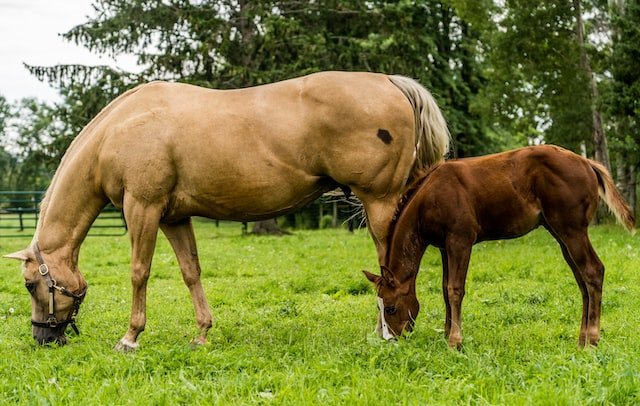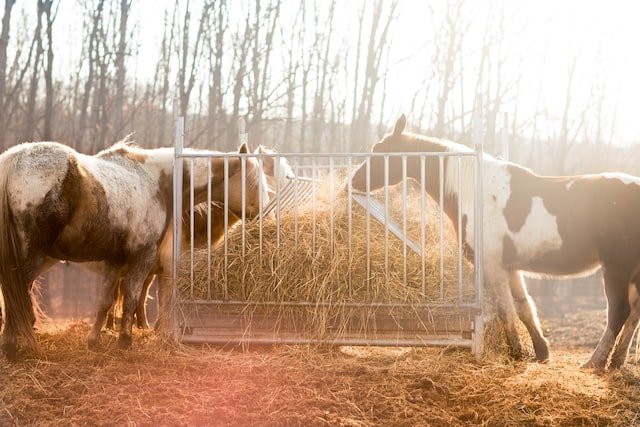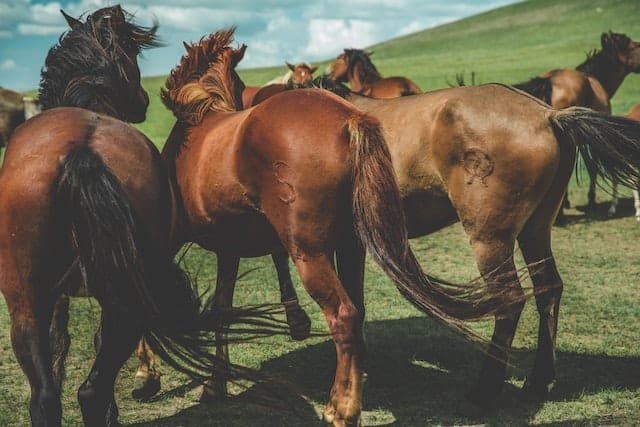Since horses seem to eat not much more than grass and hay, it’s natural to wonder how they get their protein.
Like all animals, horses need protein to survive. Proteins are the building blocks of all bodily tissues including muscle, hair, skin, and nails or, in the case of the horse, its hooves which are made of a protein called keratin. Proteins are also essential for many other vital functions such as producing enzymes, hormones, and antibodies.
So how do horses get protein?
Let’s find out. But first, let’s see how protein fits into a horse’s nutritional needs and a balanced diet.
How Does Protein Fit Into A Horse’s Nutritional Needs?
Horses, like humans, need a balanced diet to stay healthy. This means getting the right amount of carbohydrates, protein, fat, water, and minerals every day.
And evolution has ensured that horses can get all the nutrients they need from forage alone. Over the millennia, horses adapted to their environment by extracting more nutrients from grasses and vegetation than most animals.
Of all the nutrients they get from grass and hay, protein plays a key role in a horse’s health and well-being. Protein is essential for the growth and repair of all bodily tissues; producing enzymes, hormones, and antibodies; building muscle and maintaining a healthy coat.
So the big question is where are they getting this protein? Unlike us humans, who can get protein from meat or protein supplements, horses can only get protein from plants.
Not only does this mean that they need to eat plants that have protein and that they need to eat enough of those plants, but also that their bodies need to get able to extract that protein in a way that is useful to the body.
Let’s see how that happens.
How Do Horses Get Protein? (Grass + Hindgut fermentation)
Since horses mostly eat grass and hay, it’s legitimate to wonder whether they get enough protein through their natural diet.
So, how do horses get protein?
Horses extract protein from grass by breaking down cellulose, the main component of a plant’s cell walls, using a process called hindgut fermentation.
Cellulose is insoluble and indigestible by humans and when we eat plants (say, a salad) the cellulose passes through our digestive system untouched. In fact, it is cellulose that gives the bulk to our stools and makes us regular.

This cellulose however is full of nutrients, which are wasted on us humans. On the other hand, horses can digest cellulose. Horses and other equids (rhinos, tapirs, etc) have bacteria in their colons and cecums that can break down cellulose and release, amongst other things, protein.
So, the fact is that grass contains protein. If we humans were to eat it, our digestive enzymes wouldn’t be able to break down the cellulose to access the protein. But horses can access this protein, as we’ve just seen, and most horses can meet their protein needs by grazing fresh grass and in the winter from hay.
Since grass was (and still is) one of the only foods available to horses in the wild, hindgut fermentation and breaking down cellulose to extract protein from grass is one of the most amazing horse adaptation facts that you will come across.
One thing to bear in mind is that protein quantity in hay also varies depending on what the hay has been made from. Hay can be made from grass or legumes. Hay made from grass has less protein than that made from legumes for the natural reason that in their natural form legumes (like alfalfa) contain more protein than grasses do.
The amount of protein needed also varies from horse to horse, depending on the horse’s stage of life, workload, and whether they are pregnant or lactating.
For example, young horses need more protein for growth and development, while working horses need more protein to maintain their muscles. Pregnant and lactating mares also have higher protein needs than other horses.
So how much protein does a horse need?
When referring to protein in grass or other similar plants, we use the term ‘Crude Protein’. Crude Protein refers to the amount of protein estimated to be in the plant and is different from the amount of protein that is actually absorbed by the body. Horses are only able to digest and absorb about 60% of the protein in their diet and we call this ‘Digestible Protein.
Now grass and hay have between 10% and 25% of CP depending on the quality of the grass, time of year, fertilizers used, etc. We’ll use 10% – the lowest CP for our calculations.
A mature horse (normal, healthy, adult, not pregnant) needs between 1-2% of its body weight as protein. Let’s take 1.5% for our calculations. So a 1000 lb horse will need about 1.5 lb of protein each day.
To meet its protein needs, the horse needs to eat a lot of grass or hay. A horse will consume 2-3% of its body weight in forage per day which is the equivalent of a 150 lb person eating 3-4 lbs of food per day. So, a 1000 lb horse will eat about 25 lb of forage.
At 10% Crude Protein, we get available protein of 2.5 lb against a protein requirement of 1.5 lb. So a horse can get more than its needs of protein from grass or hay. This is one of the reasons why horses eat hay and are content doing so.
Important: All horses are different and the needs of each horse are different. You should consult an equine nutritionist to determine the right amount of protein for your horse.
Can Horses Take Protein Supplements?
Horses in certain categories like those growing fast or mares who are gestating or lactating may need extra protein. You should consult your vet and nutritionist about this need.
Sometimes you can get extra protein simply by feeding your horse better quality hay or by adding a legume like alfalfa to the diet or even using legume hay. You could also supplement the hay with commercial feeds made of flax seed and soybean.
The Wrap Up
So how do horses get protein? Horses get protein from grass by breaking down cellulose and extracting protein from grass. Horses have special bacteria in their digestive tract that, following a process called hindgut fermentation, break down the cellulose in grass and vegetation and extract the maximum possible nutrients from it.
Most horses are able to meet their protein needs from forage but certain horses like those growing rapidly or mares, usually in the last trimester of gestation, or lactating may need additional protein.



